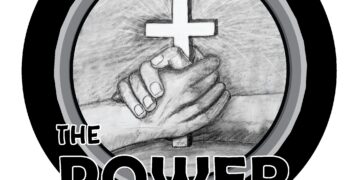Hello everyone! Spring Training has just started in Florida and Arizona. This is a very exciting time of year for me as I’m keeping an eye on some young prospects possibly making the major leagues. Just like someone who trades stocks, I am seeing if the baseball cards I bought cheaply in hopes of finding the next young star pan out or not. Usually, my ratio is 9 busts and one big hit.
Glad I’m not relying on this rate of return for retirement! Also starting to do my research on fantasy league baseball in the hopes of a better finish than 7th place in a 10-team league. As I am typing this, the urge to get a ticket to Opening Day in Nationals Park might be too much to resist. Giving up baseball for Lent is not going to happen. Dr Pepper, maybe. Small steps. This month we will look at one of the most colorful, intense, temperamental, and troubled players and managers of all time, Billy Martin. This one could turn into a to be continued article. So much to unwrap here!
Billy Martin was born in 1928 in West Berkeley, California. Early in life, his mother gave him some advice that he used as a mantra for life. I’ll paraphrase a bit since this is a family publication. “Take crap from no one, ever.” This creed was a big part of what made him so successful but at times was just as detrimental. Martin didn’t blossom as a player until his senior year of high school, when he batted .450 and caught the eye of many minor league scouts. They were impressed with everything but his temper. In a foreshadowing of things to come, he was kicked off the high school baseball team for repeated fighting with the opposition and his own teammates.
The Oakland Oaks of the Pacific Coast League was managed by Casey Stengel, who would later achieve his greatest fame as manager of the New York Yankees. Stengel wanted to sign Martin to a minor league contract, recognizing his potential. He was sent to a Class C team in Idaho when he was 18 and was promoted to the Oaks the following year. Billy was a baseball savant. What he lacked in natural skill, he more than made up for with an uncanny knowledge of all the nuances of the game. He used this to his advantage. Under the tutelage of Stengel, his education was furthered because of his obsessive nature and his desire to win at all costs. Martin was well liked by his teammates and the fans.
They realized that he always gave 100% and was more than willing to share strategy and teach other players at a young age. Something that would later make him one of the best managers ever. Billy steadily improved as the season went on and earned the starting job at 2nd base. The Oaks won the PCL pennant and the championship series, which Martin won most Valuable Player and a new car. Casey Stengel won something more valuable than a new vehicle. He was given the job of manager of the New York Yankees!
Billy Martin was heartbroken. Not only had he lost his mentor, but his only goal in life was also to be a New York Yankee. Charlie Dressen became the Oaks manager and when not on the field, Martin was right by his side learning baseball and acting as a player/ coach. He greatly improved as a player that year and Stengel was keeping tabs on his young apprentice to see if he could be of help to him on the Yankees. Martin was signed in 1949 and the New York press were dismissive, calling him a utility infielder at best, nothing special. There were two other young players who signed that year also. Along with Martin, Whitey Ford and a young switch-hitting dynamo from Oklahoma, Mickey Mantle, would be the nucleus for a new dynasty in the Bronx.
Martin didn’t play regularly in his rookie season of 1950 but made an impression with his hustle and daring on the base paths. The Yankee fans loved him and would until the end of his life. The Yankees won the World Series in 1950 and 1951. Mickey Mantle struggled mightily in his 1st season, and it was Billy who befriended him and introduced him to the New York nightlife, which soon became problematic for both. He finally earned the starting job at 2nd base in 1952, providing leadership and a spark that a team that had won consecutive World Series titles needed to retain the fire to compete at the highest level. Stengel once offered any player who was hit by a pitch and was awarded 1st base $100.
Martin took 3 for the team in one game, earning $300. The 1952 World Series against the Brooklyn Dodgers went to the deciding 7th game. With the bases loaded and the Yankees leading 4-2, Jackie Robinson hit a weak popup that certainly looked like it was going to drop for a base hit and tie up the game. Martin raced in from 2nd base and caught it at his shoe tops, saving at least two runs and ensuring the Yankees would win a 3rd Series in a row. 1953 was an even better year for Billy. He won the World Series MVP by breaking Babe Ruth’s long-standing record with 23 total bases. The Yankees won their 4th straight World Series.
Martin was drafted into the Army in 1954 and missed that season as well as half of the 1955 season. In his absence, the Yankees failed to win their 5th Series in a row. General Manager George Weiss felt that Martin was a bad influence on his teammates, especially Ford and Mantle, because of their penchant for staying out partying until the wee hours of the morning. Upon his return in 1956, Martin again starred in the World Series, helping the Yankees to win yet another championship. The next year, a brawl at a night club that Martin and some of the other Yankees were at was blamed on him even though uncharacteristically, he had nothing to do with. He felt that Weiss would use that to trade him, and he was right. He was sent to the Kansas City A’s. Heartbroken, and after bouncing around to several other teams, his playing career was over by 1961 at the age of 33.
I figured this would be a two, maybe three-part story and I was right. Stay tuned next month for the most famous part of the Billy Martin saga, his managing career. I’ll leave you with a quote from the man himself, Billy Martin. “Everything looks nicer when you win. The girls are prettier, the cigars taste better, the trees are greener.”
































